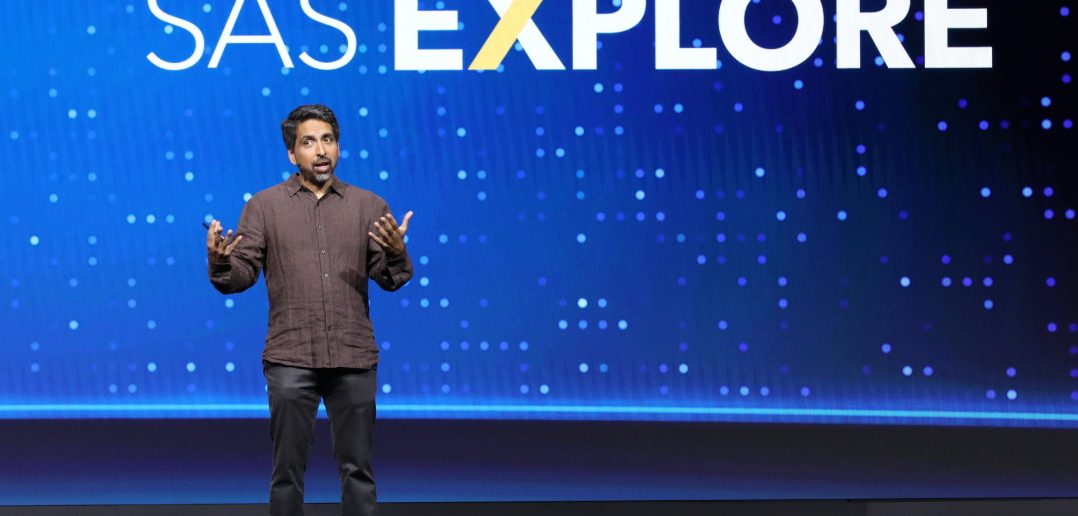As many are witnessing, AI has made people rethink and reimagine the future of education. In fact, AI has already started to revolutionize the way people teach and learn, making education more personalized, accessible and efficient.
Sal Khan, founder of Khan Academy, knows firsthand about that. He stopped by SAS Explore in Las Vegas and further emphasized the transformative potential of AI.
Khan Academy, which has helped millions learn and master various subjects, has an interesting origin story. Khan shared how the creation of Khan Academy and his desire to continuously evolve and adapt to help students and educators led him to where he is today – using generative AI to keep the ball rolling.
Khan passionately believes that AI could spark the greatest positive transformation education has ever seen. To him, it’s not just about implementing technology in the classroom; it’s about changing the way we approach learning and teaching.
Keep reading to learn more about how Khan Academy is using generative AI and reimagining the future of education.
The start of Khan Academy
Khan Academy’s journey is a testament to this belief. While working as an analyst at a hedge fund, Khan says he began tutoring his family members. In doing so, he noticed educational gaps among his family members which he attributed to a lack of one-on-one attention in the classroom. Recognizing this gap among others, Khan later founded Khan Academy, which began offering self-paced, on-demand educational resources.
Khan Academy began with the simple idea that education should be accessible to everyone, regardless of their location or financial resources. Today, millions of people use the free educational platform that has grown to offer a vast array of courses and resources.
However, Khan didn’t stop there.
Adding in the power of generative AI
Soon after generative AI began to emerge in education, Khan realized it brought both opportunities and challenges for on-demand learning. Khan embraced the opportunity to balance the two to fill those learning gaps. To do so, he began working with the founders of OpenAI (think ChatGPT) to build AI capabilities into educational resources.
As a result, Khan Academy launched Khanmigo, a tutor for students and assistant for teachers. The conversational AI tool helps students in learning without giving them answers. Given the concerns surrounding AI, particularly ChatGPT, in educational settings, Khanmigo offers a solution. Teachers and parents get a notification if a student’s interaction with the AI triggers moderation flags. Khan says he realized that while AI revealed errors, its potential far outweighed the risks. Khan shared a few ways Khanmigo can be beneficial for students and teachers:
- Creates Socratic conversations with students to engage in deeper learning.
- Rather than give an answer, it can give hints and steer students toward discovering answers themselves.
- Memorizes aspects about the student through an opt-in feature that can aid in conversation and learning, such as what they want to be when they grow up.
- Allows students to practice their debate skills so they can fine-tune arguments in a private environment before going into a classroom setting.
- Assists teachers and saves them time by co-creating lesson plans and lesson hooks that excite students.
- Helps teachers monitor progress and quickly see how each student is doing, allowing them to focus on the very human work of instructing a classroom full of kids.
Ongoing vision for AI in learning
Today, Khan Academy has more than 150 million registered users, is used in 50 languages, is used in classrooms internationally and provides free world-class education for anyone, anywhere.
Khan is excited about where AI is going and how it can be used in learning and he believes it is not something that can be passively watched. Rather, it needs to be proactively participated in by those who have positive intent for its use.
“A free world-class education for anyone, anywhere could be a reality,” said Khan.

